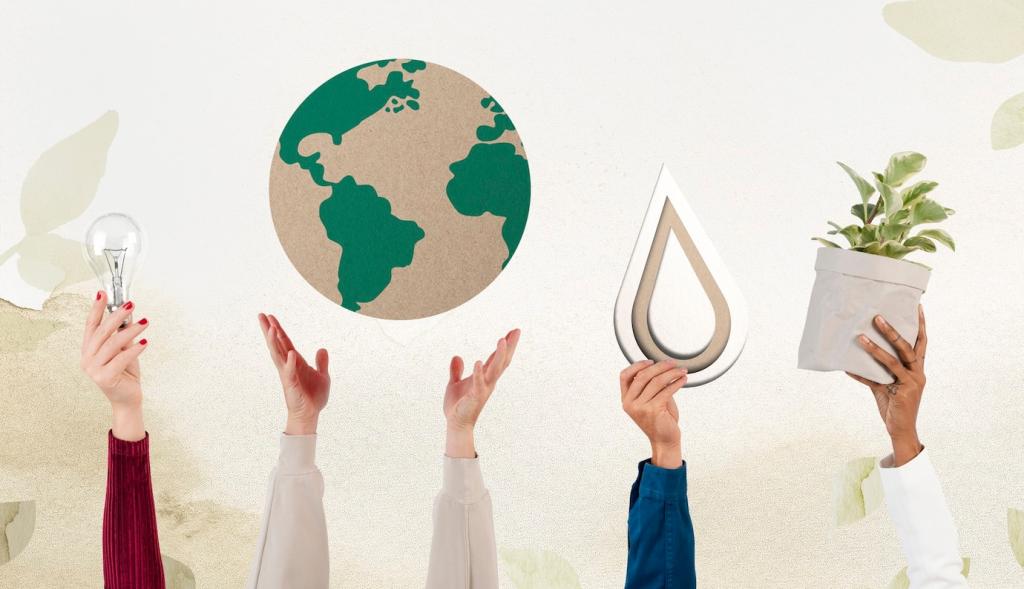Innovative Sustainable Materials in Interior Design
Discover how cutting-edge sustainable materials are transforming interior design. The growing demand for environmentally responsible spaces is driving designers to explore inventive solutions that prioritize both aesthetics and eco-friendliness. From renewable resources to recycled elements, innovative materials are creating new opportunities for interiors that are both stylish and sustainable. This page explores how these advancements are shaping modern interiors, enhancing comfort, performance, and the planet’s well-being.

Eco-Friendly Textiles for Modern Interiors
Organic cotton and linen have quickly gained favor among interior designers for their low environmental impact and versatility. These textiles are produced without harmful pesticides or chemicals, ensuring a cleaner process from cultivation to finished product. In addition to their sustainable qualities, organic cotton and linen provide a breathable, comfortable touch that makes them ideal for upholstery, drapery, and decorative elements. Their natural tones and textures add warmth and authenticity to any space, proving that eco-minded choices can enhance a room’s aesthetic appeal.

Reclaimed and Recycled Building Materials
Reclaimed Wood Surfaces
Reclaimed wood is a leading example of how sustainability and aesthetics can align harmoniously in interior design. Sourced from deconstructed buildings, old barns, or unused furniture, these timber elements possess a character and patina that cannot be replicated by new materials. Incorporating reclaimed wood into floors, ceilings, or accent walls provides depth, texture, and a sense of legacy to interiors. The material’s past contributes a narrative dimension, while each plank or beam helps prevent deforestation and reduces material waste in the construction industry.
Glass with a Second Life
Recycled glass presents a vibrant option for sustainable interior surfaces, blending environmental responsibility with striking visual effects. From countertops to decorative tiles, reclaimed glass is melted and reformed, often retaining subtle color variations and embedded textures that add to its appeal. Utilizing recycled glass not only diverts waste from landfills but also reduces energy consumption compared to producing new glass. The resulting surfaces are both practical and eye-catching, providing a modern update for kitchens, bathrooms, and feature installations with sustainability at their core.
Reimagined Metal Finishes
Metals recovered from demolished structures or industrial byproducts are increasingly being transformed into stunning interior features. Recycled steel, aluminum, and brass can be refabricated into lighting fixtures, hardware, or sculptural elements without sacrificing strength or style. These materials offer designers the flexibility to realize bold, contemporary spaces or evoke an industrial-chic sensibility. Utilizing recycled metals minimizes the demand for virgin ore extraction, reducing environmental degradation while allowing for innovative, high-end finishes that stand out in any interior setting.
Bio-Based Materials and Rapidly Renewable Resources
01
Cork is celebrated for its sustainability, as it is harvested from the bark of cork oak trees without harming the plant, allowing it to regenerate naturally over time. This remarkable material brings several practical and aesthetic benefits to interior design. Cork’s resilience and cushioning provide underfoot comfort in flooring applications, while its unique cellular structure offers effective noise absorption—ideal for creating peaceful living and working environments. The visual warmness and natural texture of cork products further enhance their appeal, introducing an organic sophistication to spaces focused on wellness and sustainability.
02
Mycelium, the root structure of mushrooms, is gaining recognition as a breakthrough bio-based material for interiors. By cultivating mycelium on agricultural waste, it can be molded into biodegradable panels, tiles, or even furniture. The production process is energy-efficient and free from harmful chemicals, delivering a truly closed-loop system. Mycelium composites are lightweight, fire-resistant, and can be engineered for strength or tactile interest, offering visionary designers new possibilities for experimentation. Their eventual compostability aligns with the principles of a circular economy, achieving sustainability at every stage of their lifecycle.
03
Engineered bamboo products take the inherent sustainability of raw bamboo and elevate it to new heights through advanced manufacturing techniques. Laminated bamboo panels, flooring, and furniture combine durability with an elegant, modern aesthetic. Bamboo’s rapid renewability stands in stark contrast to hardwoods that take decades to mature, and its exceptional strength makes it ideal for load-bearing or high-traffic areas. Through innovative design, engineered bamboo offers a sustainable, high-performance solution that adapts to a myriad of interior styles while championing environmental stewardship.
